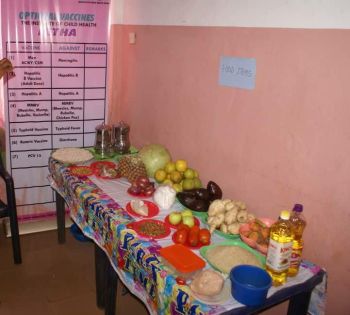Maternal complementary feeding practices and anthropometric status of children (6-23 months) in Abakaliki Nigeria, a facility based study
Abstract
Sub-optimal complementary feeding practices among children aged 6-23 months is a major cause of under-nutrition in developing countries. This study was designed to assess the complementary feeding practices and nutritional status of children 6-23 months attending an immunization clinic at Alex-Ekwueme Federal University Teaching Hospital, Abakaliki, Nigeria. The study was descriptive and cross-sectional in design. A total of 320 children were selected using a two-stage sampling technique. WHO/PAHO/UNICEF recommendations and WHO Child Growth Standard charts were used to categorize their complementary feeding and anthropometric indices, respectively. Statistical analysis was performed using descriptive statistics and inferential statistics. Complementary feeding indicators such as timely complementary feed introduction (54.1%) and minimum dietary diversity (68.7%) were met by more than half of the respondents. But overall, complementary feeding practices were considerably poor. Low minimum meal frequency, minimum adequate diet and continued breastfeeding at one year were reported. Wasting, stunting and underweight prevalences were 12.5%, 11.3% and 8.3% respectively. Children who continued breastfeeding at one year (AOR = 0.34; CI= 0.15-0.76) or met minimum dietary diversity criteria (AOR = 0.43; CI= 0.17-1.05) were less likely to be stunted. Increased attention towards breastfeeding continuation and dietary diversity improvement using locally available/affordable food stuffs is needed.

Authors retain all copyrights. In making a submission to World Nutrition, they are certifying that all material is theirs except quotations, as indicated, and that they have obtained permission for any photos, tables, or graphics taken from other publications or websites.




